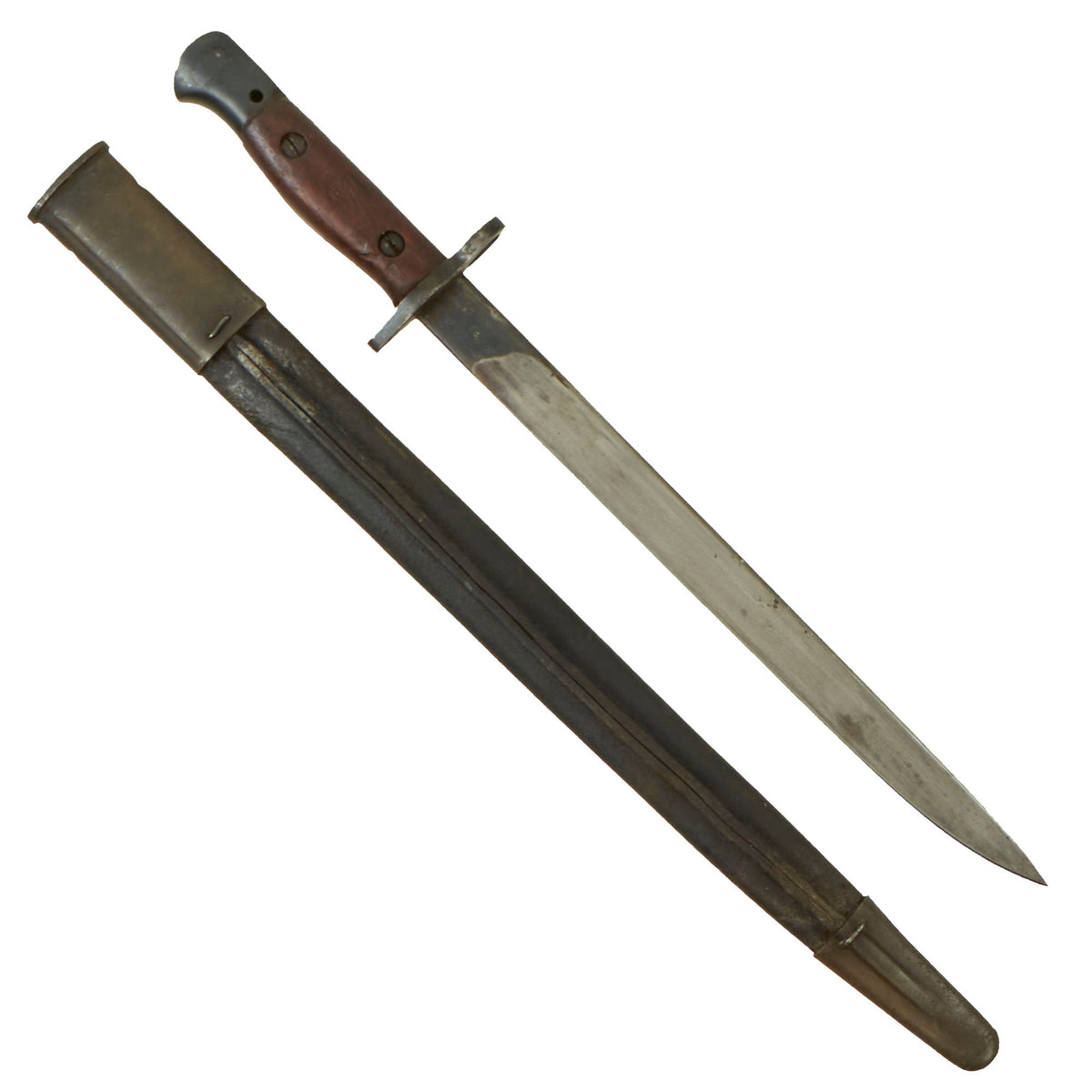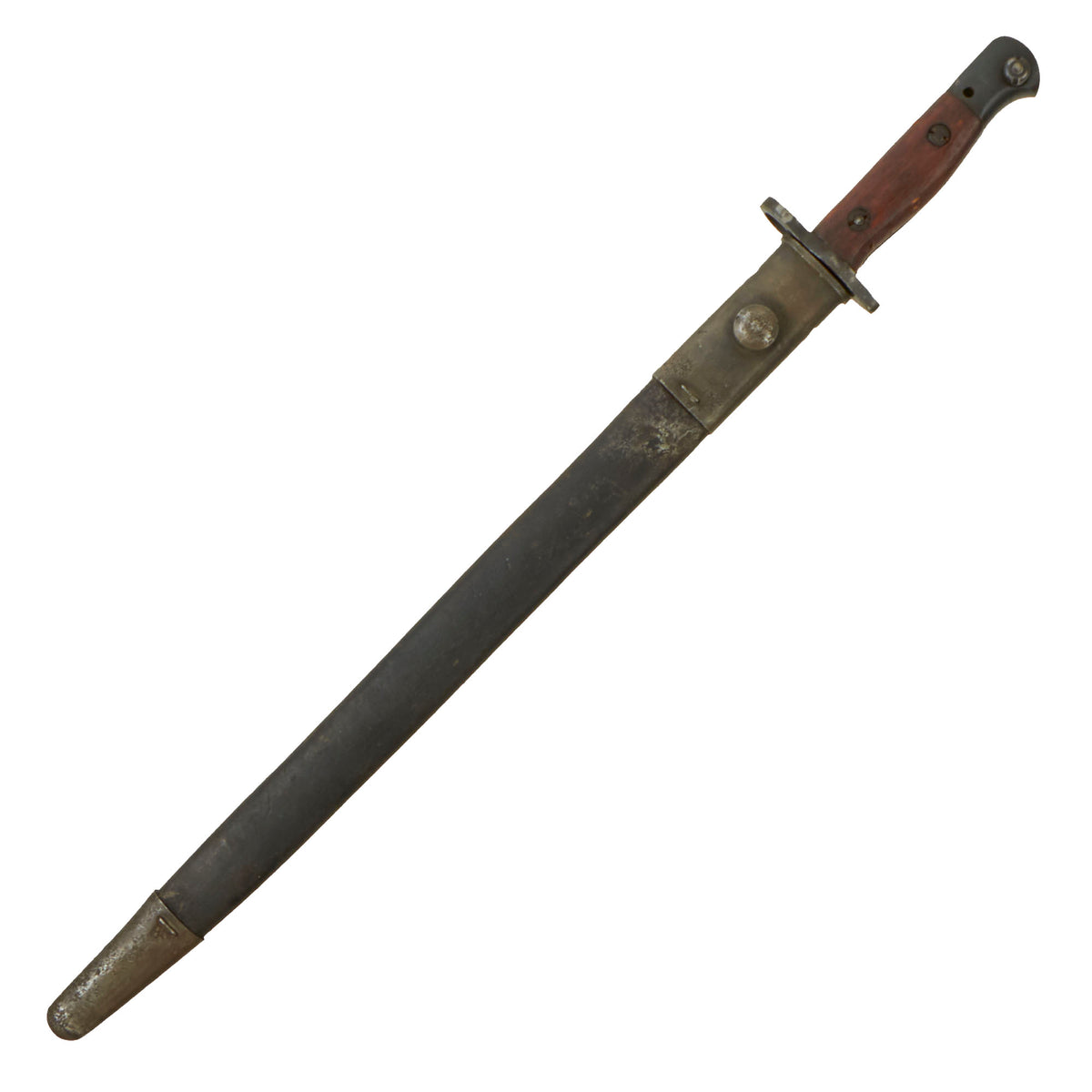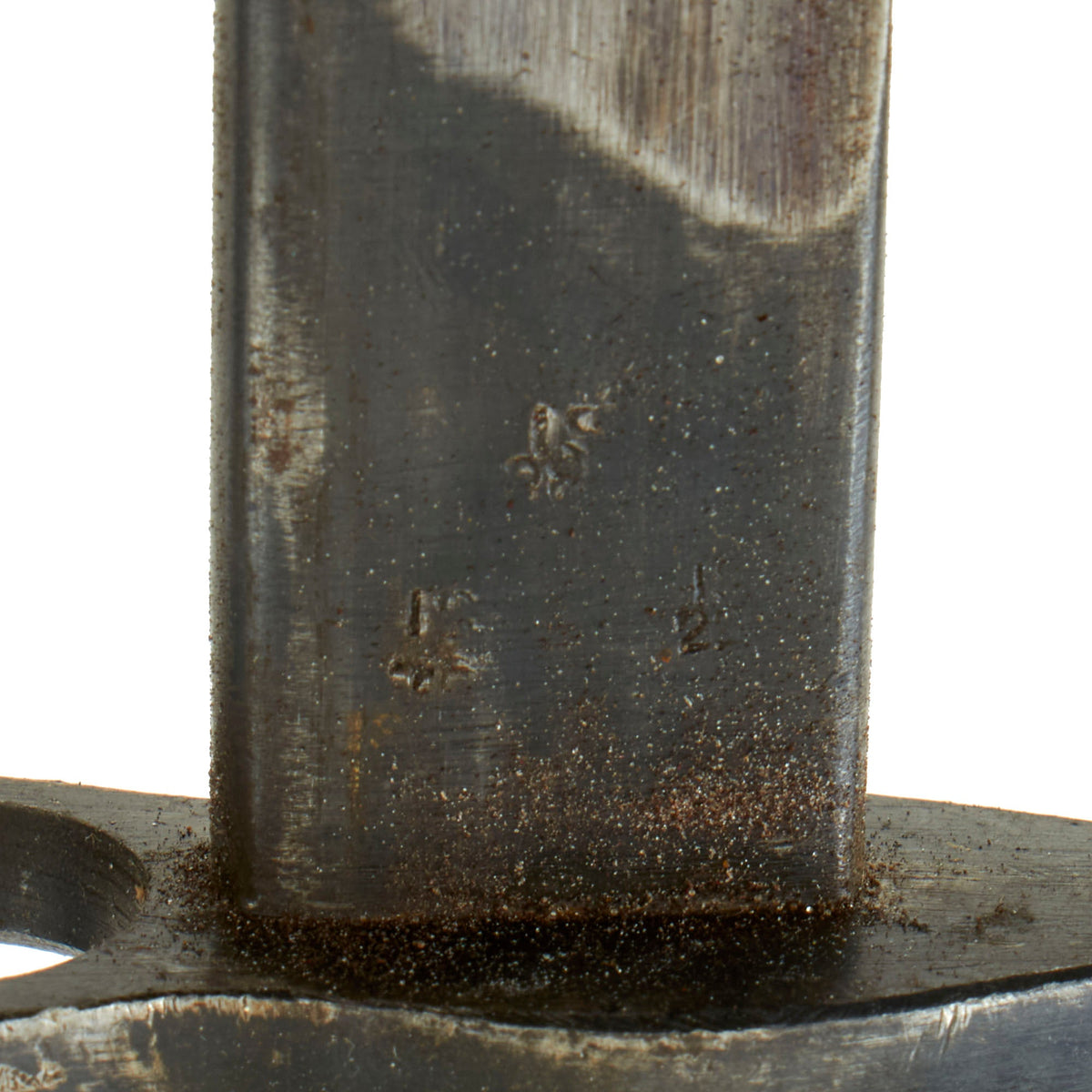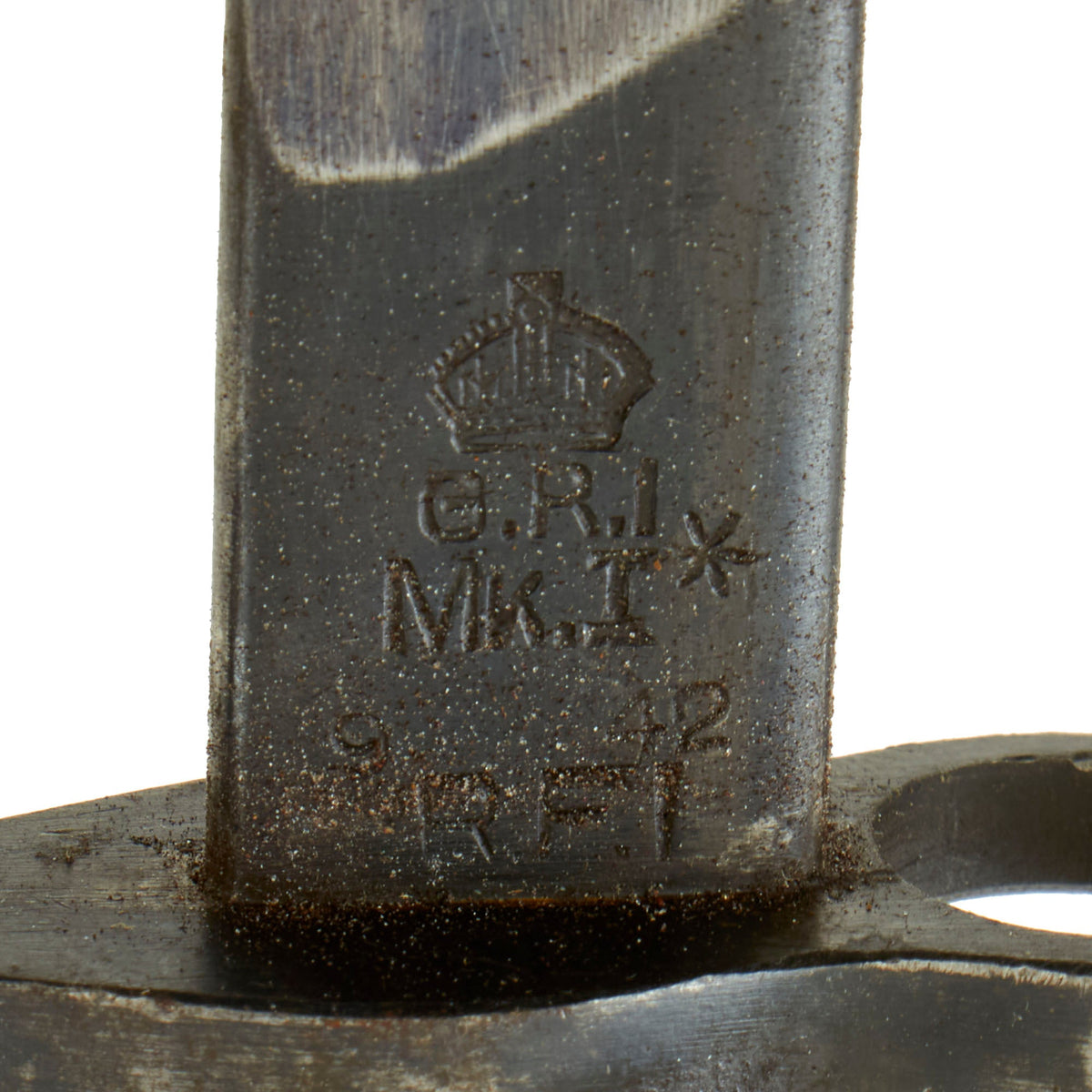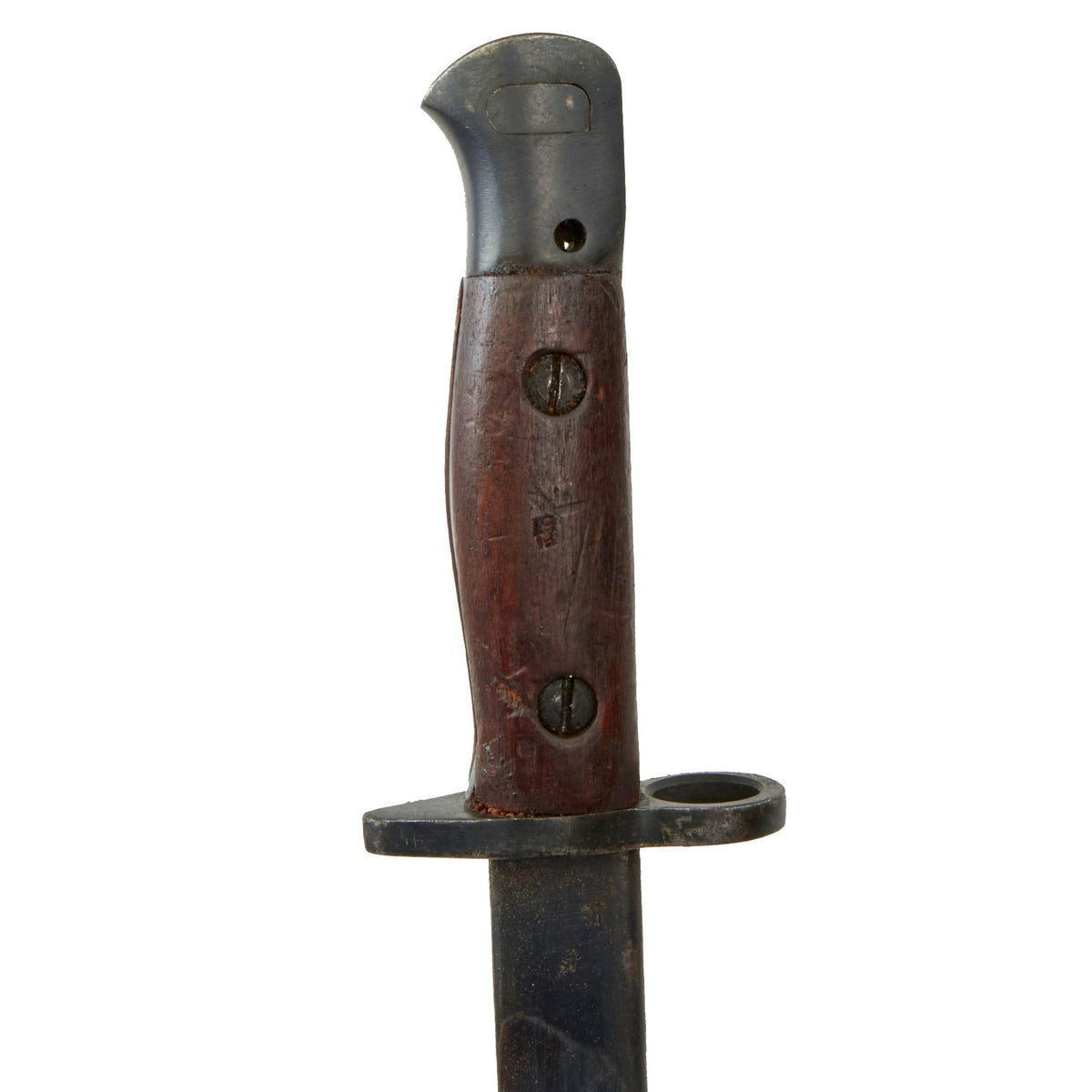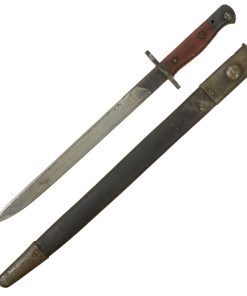Original British WWII India Pattern No. I Mk. I* SMLE Enfield Bayonet by Rifle Factory Ishapore With Scabbard – Dated 1922 & 1942 Original Items
$ 295,00 $ 118,00
Original Item: Only One Available. This is a wonderful example of a hard to find British Indian Pattern No. I Mk. I* SMLE Enfield Bayonet by Rifle Factory Ishapore in India. The bayonet has fantastic, solid markings that do not appear to be added or altered. From 1941, India began cutting down Pattern 1907 bayonets to 12.2 in (310 mm) and grinding a point into the remaining blade, creating the India Pattern No. 1 Mk. I*. The India Pattern No. 1 Mk. I** is almost identical except a false edge 2 in (51 mm) long is ground into the top of the blade. Both are recognisable by the fuller, which runs the length of the blade. The India Pattern No. 1 Mk. II and the India Pattern No. 1 Mk. II* are versions freshly manufactured with 12.2-inch blades that have no fuller (rather than being cut down from longer bayonets), the latter having a false edge on top side. Both retain the Pattern 1907 hilt and grip. The India Pattern No. 1 Mk. III and the India Pattern No. 1 Mk. III* are similar to the No. 1 Mk. II and No. 1 Mk. II* except they have crude squared pommels and rectangular grips, and are finished with black paint.
This is a very nice example of the India Pattern No. 1 Mk. I*. India used the British bayonet designation, Pattern 1907, from 1911 until 1926, when India re-designated it bayonet No. I Mk. I. India preferred the shorter P1903 bayonet, so delayed production of the Pattern 1907 bayonet until 1913, when the Crown forced its adoption for standardization purposes. Initial production included the hooked lower quillon, which was deleted in 1914.
This example was made in September 1942 at Rifle Factory Ishapore, identified by the R.F.I. markings. RFI’s production was inefficient, with No. I Mk. III rifle production only totaled to approximately 30,000 from 1910-14. Outbreak of the First World War saw production increase. According to RFI, 36,037 No. I Mk. III rifles were produced during 1918-19. Production is not believed to have exceeded 10,000-14,000 rifles per year during the interwar period. However, expansion and modernization of RFI during the 1920s and 1930s enabled RFI to produce 750,000 rifles and bayonets during 1939-45.
Most of the early RFI bayonets had their blades shortened to 12-inches during the Second World War (like this example). Examples retaining their original blade length are uncommon. The original markings on this example appear untouched or added to, suggesting that this piece saw minimal rework during its very long service life.
Markings Present:
– Ricasso (left): Crown over “G.R.I.” (George Rex Imperator) over “Mk. I*” over “9 42” over “R.F.I.”
– Ricasso (right): “IS” over “22”, “28” and “46” (Ishapore Inspection Mark) though they are extremely faint on this side.
Spine: “ENGLAND”
The scabbard is of British manufacture by appearance of the faded markings. One of the markings on the side seam of the leather scabbard appears to read as CLIFF WASS…. And is difficult to read unfortunately.
The overall condition is quite nice with signs of honest use and wear but nothing too damaging that takes away from the beauty of the bayonet.
A wonderful, rather uncommon bayonet that comes more than ready for further research and display.
Specifications:
Blade Length: 12″
Blade Style: Single Edge with Fuller
Overall length: 16 3/4″
Crossguard: 2 1/2”
Scabbard Length: 17 1/2″
Fast Shipping with Professional Packaging
Thanks to our longstanding association with UPS FedEx DHL, and other major international carriers, we are able to provide a range of shipping options. Our warehouse staff is expertly trained and will wrap your products according to our exact and precise specifications. Prior to shipping, your goods will be thoroughly examined and securely secured. We ship to thousands clients each day across multiple countries. This shows how we're dedicated to be the largest retailer on the internet. Warehouses and distribution centres can be located throughout Europe as well as the USA.
Note: Orders with more than one item will be assigned a processing date depending on the item.
Before shipping before shipping, we'll conduct a thorough inspection of the items you have ordered. Today, the majority of orders will be delivered within 48 hours. The delivery time will be between 3-7 days.
Returns
The stock is dynamic and we cannot completely manage it because multiple stakeholders are involved, including our factory and warehouse. So the actual stock may alter at any time. It's possible that you may not receive your order once the order has been made.
Our policy is valid for a period of 30 days. If you don't receive the product within 30 days, we are not able to issue a refund or an exchange.
You can only return an item if it is unused and in the same state as the day you received it. You must have the item in its original packaging.
Related products
Uncategorized
Uncategorized
Angolan Rebel 1970s era 60mm Inert Display Mortar from Angolan Civil War Original Items
Uncategorized
Armoured Fighting Vehicles of the World: AFVs of World War One (Hardcover Book) New Made Items
Uncategorized
Uncategorized
Uncategorized
Uncategorized
Uncategorized
Uncategorized
Uncategorized
Band of Brothers ORIGINAL GERMAN WWII Le. F.H. 18 10.5cm ARTILLERY PIECE Original Items
Uncategorized
Uncategorized
Uncategorized
Uncategorized
Uncategorized
Uncategorized
Uncategorized
Uncategorized
Uncategorized

